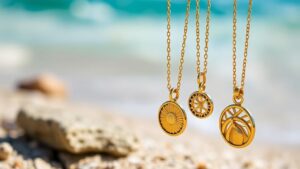Detecting for Coins in Coastal Fishing Villages and Harbors
Detecting Coins in Coastal Fishing Villages and Harbors
The practice of coin detecting in coastal fishing villages and harbors is a fascinating intersection of archaeology, history, and treasure hunting. With a long history of maritime trade, these areas are often rich in artifacts, including coins that can provide significant insights into the past. This article will explore the methodologies, equipment, and implications of detecting for coins in these unique environments.
The Historical Significance of Coastal Trade Routes
Coastal fishing villages and harbors have historically been crucial for trade and commerce. From the Phoenicians to the Vikings, seafaring cultures have utilized these spots as hubs for exchanging goods. For example, the coastal town of Whitby in England was an important harbor during the Middle Ages, leading to a wealth of intriguing historical finds.
Coins recovered from these sites often reflect the economic conditions and trade networks of the time. For example, the presence of Roman coins in British coastal areas suggests not only trade with the Roman Empire but also indicates the cultural influences that permeated these small villages. Plus, modern studies have shown that certain types of coins, such as those from the 18th century found in coastal Florida, serve as indicators of the areas bustling shipping activity during the period of European colonization.
Methods of Coin Detection in Coastal Environments
Coin detecting in coastal areas requires a combination of appropriate techniques and equipment tailored to the unique challenges of the environment. The methodologies employed typically include:
- Metal Detectors: The primary tool for detecting coins is a metal detector. Machines with a multi-frequency option are especially effective in coastal environments due to varying soil and water salinity levels.
- Geophysical Surveys: Techniques like ground-penetrating radar (GPR) can help identify larger deposits of metal objects before deploying metal detectors.
- Manual Recovery Techniques: Once signals are detected, manual excavation, often using sand scoops, must be employed with care to avoid damaging valuable artifacts.
Time and tide are significant factors, as these can alter the accessibility of areas for detecting. best times for treasure hunting are usually low tides when more land emerges, providing increased access to the foreshore.
Challenges in Coastal Coin Detecting
While the prospect of discovering coins can be thrilling, coin detectors face several challenges in coastal environments:
- Environmental Conditions: Saltwater, sand, and shifting tides can complicate detection efforts. Saltwater can corrode metal detectors, affecting their functionality and accuracy.
- Legal and Ethical Considerations: Many coastal areas have regulations concerning treasure hunting, including laws related to maritime heritage protection. It is essential for detectors to research and comply with local laws.
- Preservation of Artifacts: Coins recovered from beaches or underwater can be fragile and require proper cleaning and conservation techniques to prevent damage.
Real-World Examples of Successful Coin Finds
Several high-profile discoveries highlight the potential of coastal coin detection:
- The 1715 Plate Fleet: This fleet sank off the coast of Florida during a hurricane, resulting in the loss of a significant amount of treasure, including gold and silver coins from Spain. Countless recreational divers and detectors have found coins dating back to this event, spurring interest in similar sea-related finds.
- The Tiberius Coin from the Thames: A rare bronze coin from the reign of Emperor Tiberius was discovered along the banks of the Thames in London. This find not only provided historical context but also enriched the narrative about Roman Britain.
Conclusion and Actionable Takeaways
Detecting coins in coastal fishing villages and harbors yields rich historical insights while posing unique challenges. Successful treasure hunting requires understanding both the methodology and the historical context of the area. Plus, adherence to legal and ethical standards is paramount to preserving cultural heritage.
For those interested in pursuing this hobby, the following actionable steps can guide your endeavors:
- Research local coastal history to identify potential hotspots for coin recovery.
- Invest in a quality multi-frequency metal detector suited for sandy and salty environments.
- Always ensure you have the necessary permits or permissions when detecting in public or protected areas.
By equipping yourself with the right knowledge and tools, you can embark on your own journey into the past, revealing the treasures that lie beneath coastal sands.


